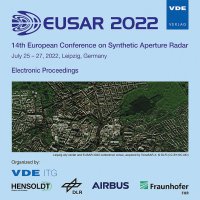Through-Wall Multistatic Polarimetric 3D SAR
Conference: EUSAR 2022 - 14th European Conference on Synthetic Aperture Radar
07/25/2022 - 07/27/2022 at Leipzig, Germany
Proceedings: EUSAR 2022
Pages: 4Language: englishTyp: PDF
Authors:
Andre, Daniel; Sabiers, Richard (Centre for Electronic Warfare Information and Cyber, Cranfield University, Defence Academy of the United Kingdom, UK)
Finnis, Mark (Centre for Defence Engineering, Cranfield University, Defence Academy of the United Kingdom, UK)
Abstract:
Through-Wall (TW) Synthetic Aperture Radar (SAR) imagery can be difficult to interpret due to several factors including signal attenuation in highly cluttered environments, target overlay, difficult to interpret low SAR resolution and low frequency scattering responses. One approach which may help improve image interpretability is to employ 2D SAR apertures with multiple distributed receivers in all polarizations. For example: a 2D SAR aperture would allow the formation of 3D images, reducing noise levels and clutter overlay, as well as improving the recognition of objects through providing height information; the distributed receivers would be more likely to capture any bright specular responses from targets in the scene, making them visible; the polarimetric collection may provide useful target information, such as its orientation, polarizability or number of interactions with the radar signal. Highlight results from TW-SAR bistatic polarimetric experiments at the Cranfield University GBSAR laboratory are presented, illustrating the utility of the approach.


